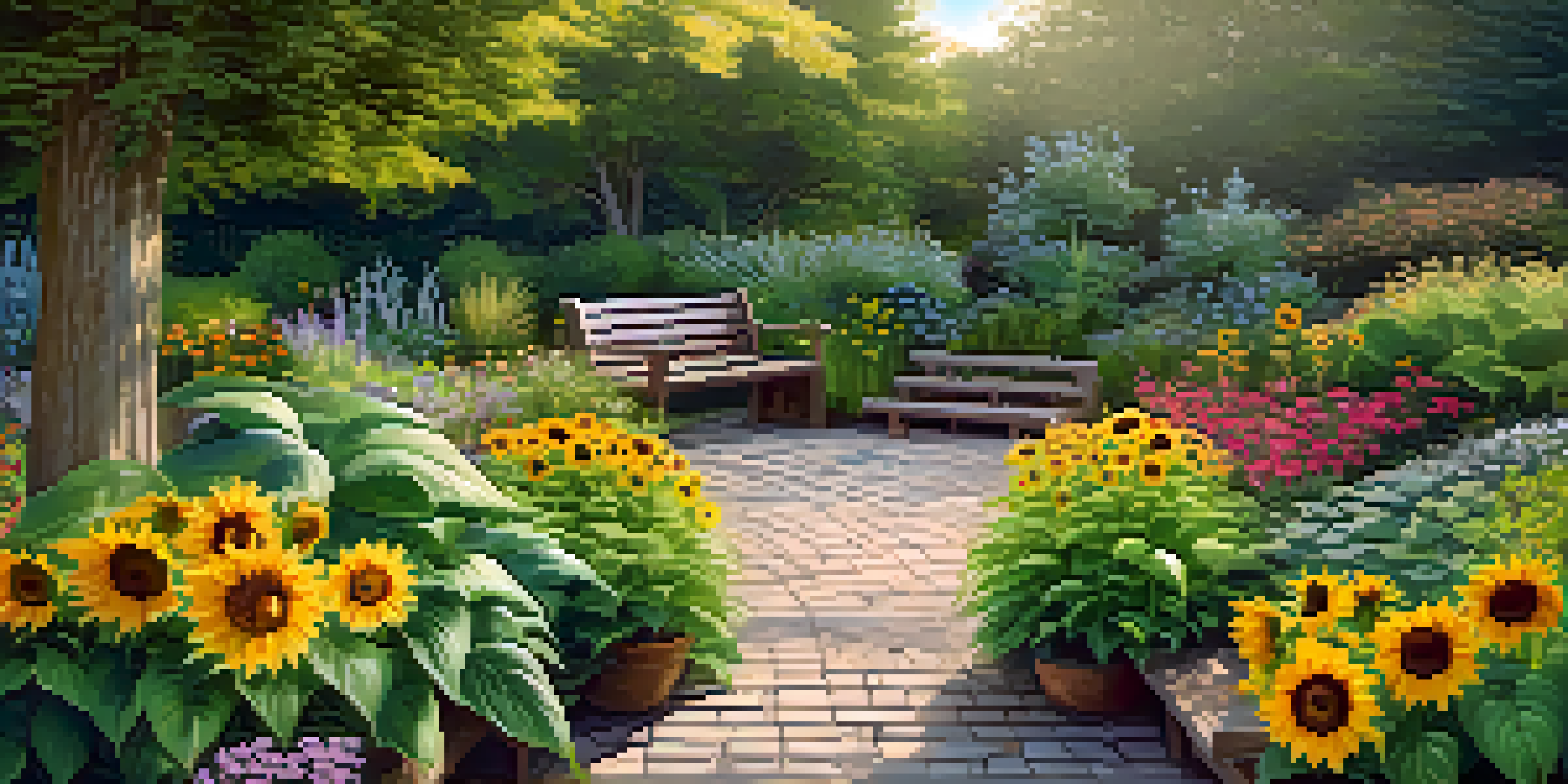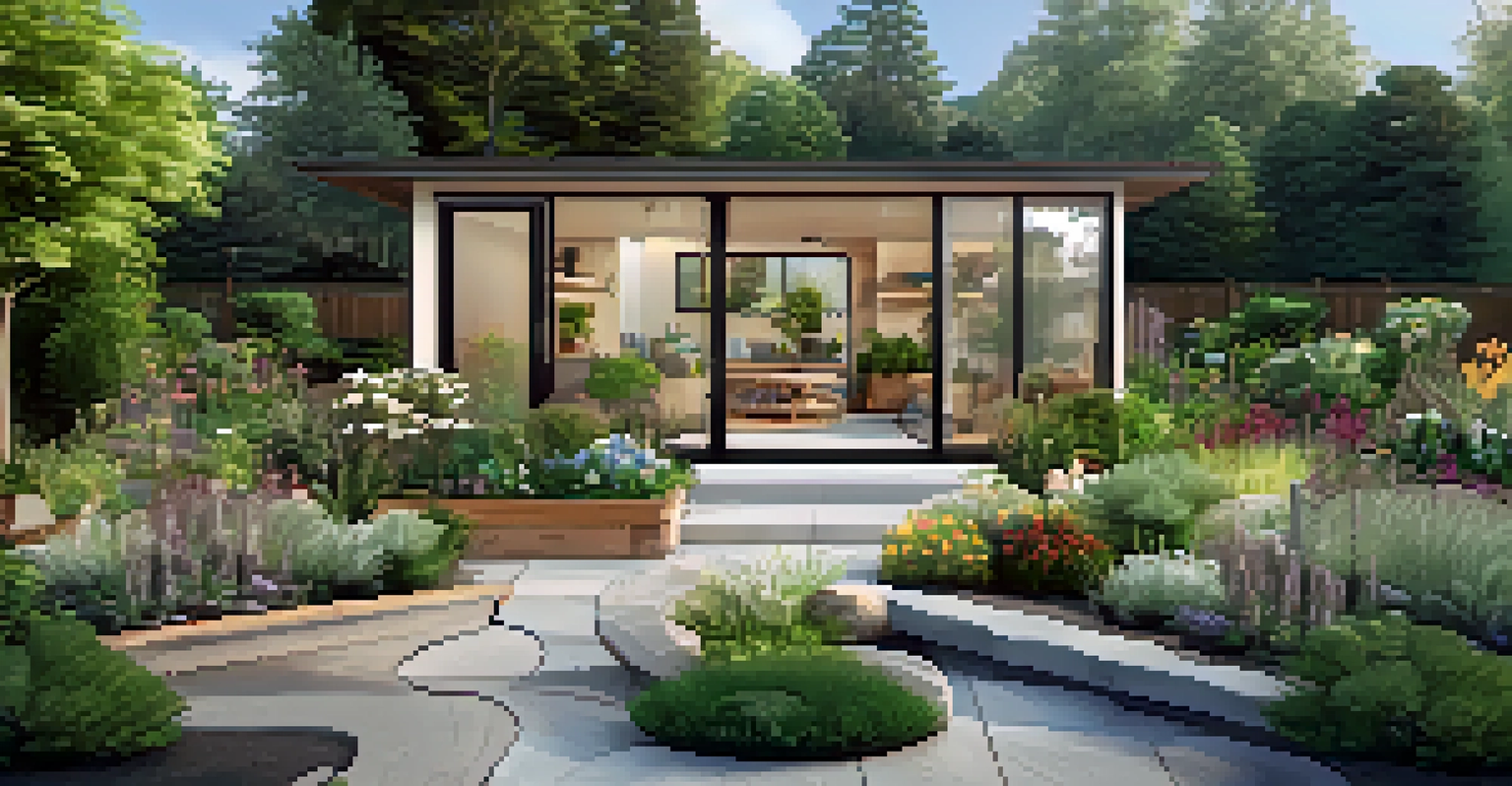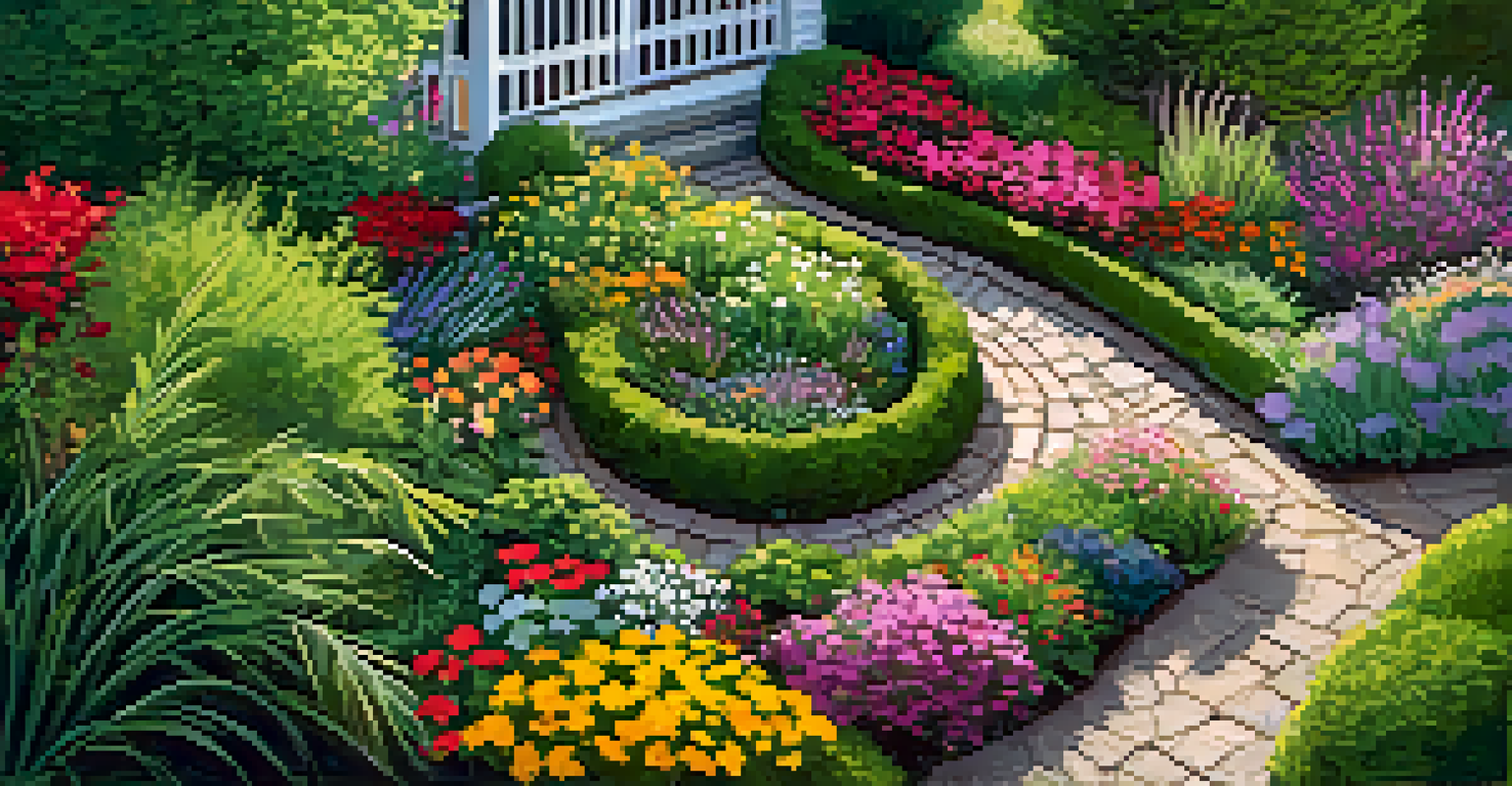Creating a Garden Plan: Steps to a Successful Virtual Layout

Understanding the Basics of Garden Layout Planning
Before diving into the design, it's essential to grasp the fundamentals of garden layout. A garden plan is much like a blueprint for a house; it sets the stage for what's to come. Think of it as an artistic expression where both functionality and aesthetics play vital roles.
To plant a garden is to believe in tomorrow.
Consider the purpose of your garden: is it for relaxation, growing vegetables, or attracting pollinators? Understanding your goals will guide your decisions throughout the planning process. The clearer your vision, the more successful your layout will be.
Don’t forget about the physical space you have available. Measure your garden area and take note of existing features like trees and pathways. This will ensure your plan fits seamlessly into your environment and makes the most of what you have.
Choosing the Right Tools for Virtual Garden Planning
With technology at our fingertips, creating a virtual garden layout has never been easier. There are several tools available that can help you visualize your ideas, from software to simple apps. Popular options include Garden Planner and SketchUp, which allow you to drag and drop elements into your design.

These tools often come with templates and plant libraries, making it simple to explore different arrangements. Imagine being able to see your garden layout in 3D before planting a single seed! It’s an exciting way to experiment without the commitment.
Plan Your Garden Layout Strategically
A well-thought-out garden layout acts like a blueprint, balancing functionality and aesthetics while considering the purpose and available space.
Additionally, many platforms offer tutorials and community forums where you can seek advice and inspiration. Engaging with other garden enthusiasts can open your eyes to ideas you may not have considered before, enriching your planning experience.
Mapping Out Your Space: Scale and Proportions
When creating your garden layout, it's crucial to consider scale and proportions. Just like in any architectural design, the size of each element should relate to the overall space. If your garden is small, opting for compact plants can make a big difference in achieving balance.
Gardening adds years to your life and life to your years.
Using graph paper or a digital tool, start sketching your garden layout to scale. This helps you visualize how much room your plants will need to grow and thrive. Remember, overcrowding can lead to poor air circulation and competition for nutrients, resulting in unhappy plants.
Also, think about the height of plants. Taller plants should generally be placed at the back or center (depending on your perspective), while shorter plants can fill in the front. This layering effect creates depth and interest, making your garden more visually appealing.
Selecting Plants That Thrive in Your Environment
Once you have a layout, it's time to select plants that will flourish in your specific conditions. Consider factors like sunlight, soil type, and climate before making choices. For instance, if your garden receives full sun, you might consider sunflowers and lavender, while shadier spots may be better suited for hostas and ferns.
Researching native plants can also be beneficial, as they are often adapted to your local environment and require less maintenance. Native plants can enhance biodiversity, attracting beneficial insects and wildlife to your garden.
Select Suitable Plants for Success
Choosing the right plants based on sunlight, soil type, and climate ensures that your garden thrives and attracts beneficial wildlife.
Don’t forget to think about seasonal interest. Incorporating a mix of perennials and annuals can provide color and texture throughout the year. This way, your garden will remain vibrant and engaging, no matter the season.
Incorporating Hardscaping into Your Garden Design
Hardscaping refers to the non-plant elements in your garden design, such as paths, patios, and fences. These components are crucial for creating structure and functionality in your space. Think of hardscaping as the bones of your garden, providing support for the living elements.
When planning your layout, consider how paths will guide visitors through your garden. Curved paths can create a sense of exploration, while straight lines offer a more formal feel. The materials you choose, from gravel to pavers, can also influence your garden's overall aesthetic.
Additionally, incorporating features like seating areas or decorative elements can enhance the experience of being in your garden. Imagine sipping tea on a cozy bench surrounded by your favorite blooms; these details can transform your space into a personal sanctuary.
Planning for Maintenance: Keeping Your Garden Healthy
A successful garden plan considers ongoing maintenance as much as the initial layout. Think about how much time you can realistically dedicate to caring for your plants. Some gardens require more upkeep than others, so choose accordingly to avoid feeling overwhelmed.
Incorporate elements that simplify maintenance, like choosing drought-resistant plants or installing a drip irrigation system. These choices can save you time and resources, allowing you to enjoy your garden instead of constantly working on it.
Incorporate Hardscaping Elements
Integrating pathways, seating areas, and other non-plant features enhances the structure and usability of your garden.
Regular maintenance tasks, such as pruning, weeding, and mulching, should also be scheduled into your garden plan. By dedicating specific times to these tasks, you’ll create a thriving garden that remains healthy and beautiful throughout the seasons.
Bringing Your Virtual Garden Plan to Life
After laying the groundwork for your virtual garden plan, it’s time to put it into action! The transition from virtual to real-life can be thrilling as you start planting and watching your vision unfold. Begin by gathering all necessary materials, including tools, soil, and plants.
Take it step by step; don’t rush the process. Start with larger elements like trees or shrubs before filling in with smaller plants. This will give you a clearer idea of spacing and allow you to adjust your layout as needed.

Remember that gardening is a journey. Embrace the unexpected, learn from your experiences, and celebrate your successes along the way. Your garden will evolve over time, and that's part of the beauty of nurturing it from your carefully crafted plan.